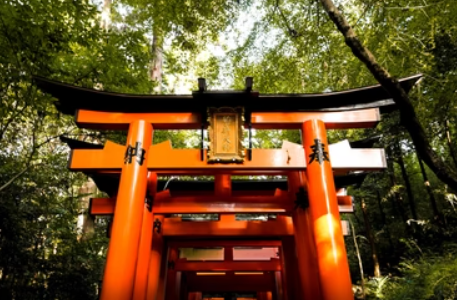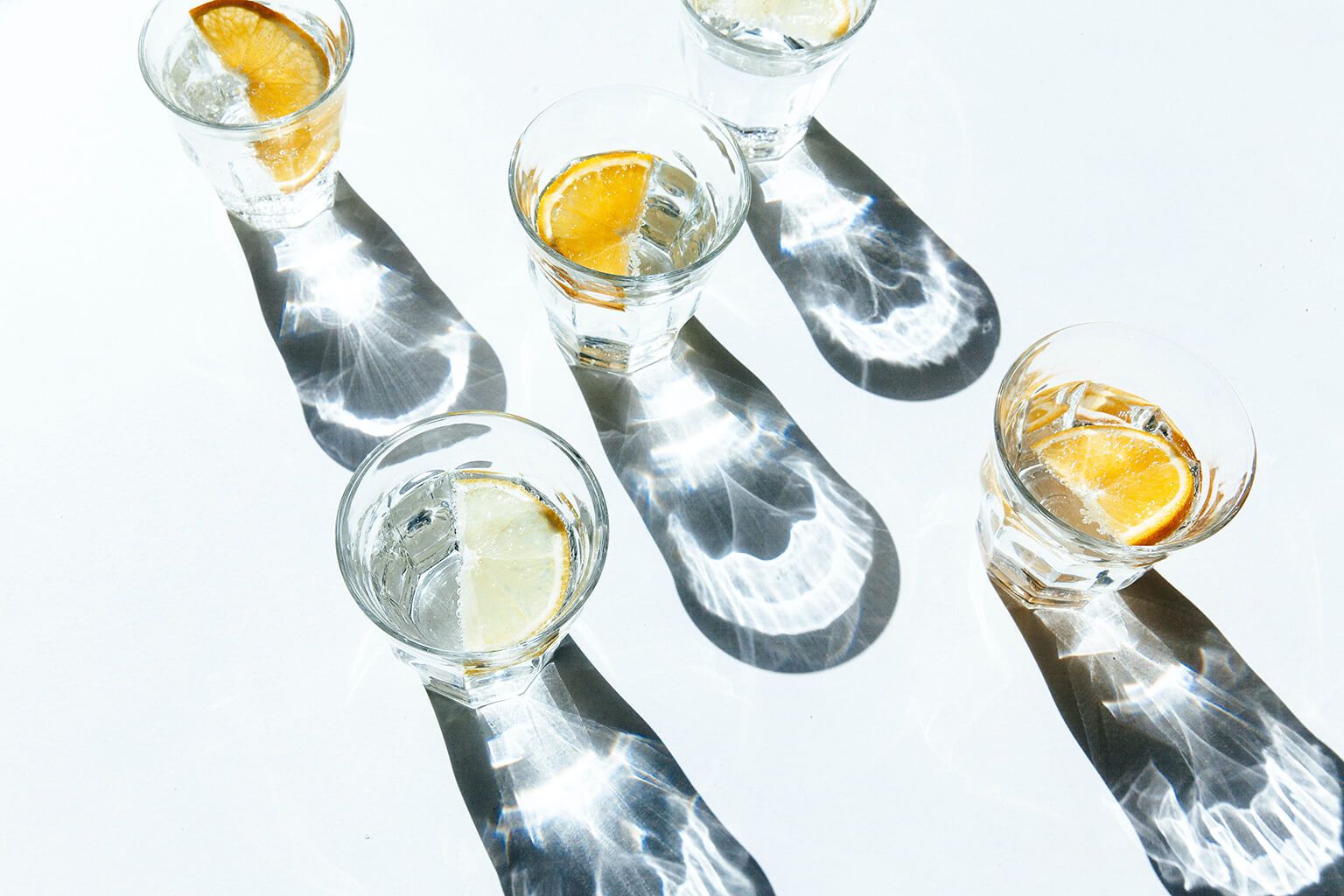For the Japanese, sake is more than just an alcoholic beverage enjoyed during meals and festivities. Culturally, sake has an ancient connection with art and the Shinto religion. Present in music, plays, dance and storytelling, sake was for all social classes. There are stories of how drinking too much sake got one into trouble or how a hero took advantage of a drunken enemy. Many of these traditional arts have been passed down by generations of dedicated disciples and can still be seen today.
Let’s look at some Japanese traditional arts and stories where sake plays a role.
Kabuki 歌舞伎
Kabuki (literally “the art of song and dance”) is a heavily stylized dance-drama hailing back to the early Edo period (1603-1868). Over centuries, it evolved into an all-male cast of performers, musicians and singers, many passing on their stage name and role to their descendants. With lavish costumes and elaborate set designs, kabuki storylines depict Japanese mythology, historical events and everyday life of the Edo period.
You can see kabuki performances today at major theaters such as the Kabuki-za (Tokyo), Minami-za (Kyoto), Shinbashi Embujo (Tokyo) and smaller and regional theaters scattered across the country.
Shuten-douji (酒呑童子)
“Shuten-douji” (meaning “sake drinking young child”) is a famous folklore about a demon leader who was a heavy sake drinker who would kidnap and eat young girls. His reign of terror ends when he is killed by Minamoto no Yorimitsu, from the powerful family of imperial regents, by offering a sake that puts him to sleep. Yorimitsu then chops off his head.
It’s a popular story depicted in kabuki, ukiyo-e (woodblock printing), and noh (the oldest surviving form of dance-drama with actors wearing masks), and is celebrated in local festivals.
Kagatobi “Sen Nichi Kakoi” is a sake bottle featuring an ukiyo-e of kabuki actors playing a group of firefighters belonging to the Kaga feudal lord called Kagatobi (加賀鳶), who were known for their fierce fistfights and firefighting skills. This is a scene from the play “Mekura Nagaya Ume Kagatobi” (1886). Kaga is the feudal name of present-day Ishikawa prefecture, where this sake is produced.
Kyogen 狂言
Kyogen is a short comedic storyline depicting everyday life during the Edo period. It was initially a comic relief break between the solemn noh performances on the same stage. Unlike kabuki, there is no set design or props apart from the noh stage, and two or three male actors who perform it.
You can see kyogen and noh performances at the National Noh Theater (Tokyo), Yokohama Noh Theater (Yokohama) and Kyoto Kanze Kaikan (Kyoto).
Most kyogen roles depict a master and his two mischievous servants, Taro Kaja and Jiro Kaja, who find themselves in all sorts of troubles.
Hinosake (樋の酒)
Before heading out, the master entrusts the rice storehouse to Taro Kaja and the sake brewery to Jiro Kaja, ordering them not to leave their posts during his absence. Taro Kaja looks into the sake brewery and sees Jiro Kaja stealing sake. Demanding his share, Jiro Kaja delivers sake to Taro Kaja by pouring the sake through a bamboo tube, and both become rowdy and drunk. At the climax, the master returns home and kicks out the two drunks.
Ginkobai “Hannya Tou” is a sake bottle whose label features Hannya, a mask used in noh theater. Hannya depicts a jealous and vengeful female demon with golden eyes, two horns and sharp teeth. Her expression is demonic, angry, frightening, tormented and sorrowful.
Rakugo 落語
Rakugo (“fallen word”) is long-verse storytelling of comical or sentimental stories, popularized during the late Edo period. Unlike the more “refined” arts such as kabuki and noh, rakugo depicts the everyday life of the “Edokko” (people of Edo), such as family and neighborhood disputes, horror stories, and of course, people who drink too much sake.
There is no set design, just the “rakugo-ka” (storyteller) sitting on a cushion in front of the audience. The only props are a paper fan and a “tenugui” (small cloth), which depending on the story, can transform into chopsticks, sword, rope, fishing rod, paper lantern or letter. The storyteller plays the role of several characters only by the turn of the head or change in voice. While the setup is simple, it’s up to the craft of the rakugo-ka to paint the scene with words and a few props as aid.
You can enjoy rakugo at Shinjuku Suehirotei (Tokyo), Asakusa Engei Hall (Tokyo) and Tenmatenjin Hanjotei (Osaka), although most are held in local theaters and community spaces.
Tameshi sake (試し酒)
The story goes that a master hears about a heavy drinker who doesn't get drunk even after five “sho” (approximately 9 liters). He challenges the drinker to a high-stakes bet, and the drinker asks for some time to prepare. The drinker returns and finishes all five sho of sake, then boasts that he had already drunk five sho before the bet to check if he could finish five sho.
Geisha/Geiko/Maiko 芸者・芸妓・舞妓
Geisha, “geiko” or “maiko” refer to professional female entertainers skilled at traditional dance and singing. Geisha is the Kanto term (Tokyo region) and geiko is the Kansai term (Osaka and Kyoto regions). Maiko are geisha/geiko trainees.
Many perform at high-end Japanese restaurants and “ochaya” (tea houses) as entertainment during and between meals. It used to be only for wealthy clients, and first-timers were shunned without an introduction by a regular. Nowadays, you can experience it in the historic districts of Kyoto and Kanazawa.
One type of entertainment is drinking games (“ozashiki asobi” お座敷遊び), which involves the guest and geisha, where the loser has to drink up.
Ukiyo-e 浮世絵
Ukiyo-e woodblock printing was an extremely popular way to mass-produce art during the Edo period. These prints depicted historical events, folklore, landscapes, everyday life and people of all social strata. As it was cheaply produced, it was art for the masses. Many feature sake barrels, sake production, drinking, and drunk people, showing us that sake was an essential part of everyday life.
The label on Choryo “Yoshinosugi no Taru Sake” features Hokusai’s “Fujimigahara in Owari Province,” depicting Mount Fuji and the suburbs of Nagoya during the Edo period.
The label on Tedorigawa “Silver Mountain” depicts an ukiyo-e print of sake production. It’s made in the yamahai style, a traditional production method developed in 1909. It utilizes ambient lactic bacteria from the environment, resulting in a more complex and bold flavor.
The artwork on the label is originally from the book “Nihon Sankai Meisan Zue (日本山海名産図会)” by ukiyo-e artist Shitomi Kangetsu (1747-1797). It depicts brewers at a sake brewery washing rice for sake production.
Sake through art and beyond
Throughout the ages, sake has played an essential role in traditional Japanese arts, and goes far beyond the realm of an alcoholic drink. The stories of sake are woven into mythology, heroic stories, comedy and daily life, which are seen in kabuki, kyogen, ukiyo-e, cultural festivals and more. Sake is ingrained in Japanese culture, and with growing international interest, will hopefully flourish in new ways. I hope you’ll have the opportunity to visit Japan and see a kabuki performance or play drinking games with a geisha, just like the Eddoko did 400 years ago.















